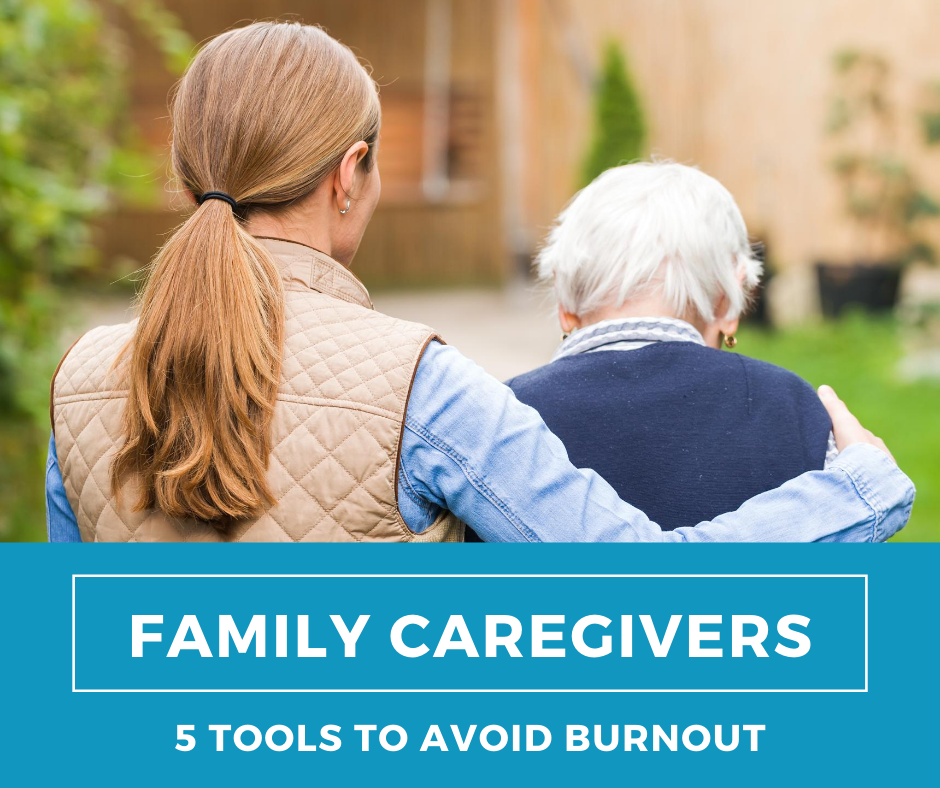Family Caregivers: 5 Tools to Avoid Burnout

According to the National Center on Caregiving, a family caregiver (or informal caregiver) is “an unpaid individual (for example, a spouse, partner, family member, friend, or neighbor) involved in assisting others with activities of daily living and/or medical tasks.” In the US, 85% of caregivers care for a relative or loved one with 42% of those caregivers supporting an aging parent. Since early 2020, we have seen this vulnerable aging population fall prey to the COVID-19 pandemic. As a result, those providing care for this group have also begun to fall prey to this virus’s demise in the form of care-fatigue. We’ve compiled a toolkit of some simple resources to help the caregivers that are on the frontline of care for their loved ones avoid burnout.
5 Tools to Avoid Burnout
1. Plan Your Communication
When taking your loved one to any sort of appointment, plan out what you hope to accomplish while you are there. Make a checklist of what items you want to discuss with the provider. Ask your loved one what they would like to talk about as well. In addition, keep your other family members informed about the care you are providing by establishing a weekly check-in whether through email or Facetime or phone call.
2. Don’t Go It Alone
Providing daily care can be immensely rewarding but can also be a physically and emotionally exhausting job. When the job seems bigger than you can handle alone, do some research into community resources for assistance. There are networks of caregiving agencies that can help with everything from personal care to behavioral issues. Determine what you can afford to pay for services and prioritize those that are most needed for you to maintain your own health.
3. Self-Care is a Necessity, Not a Luxury
Have you heard the saying “you cannot fill someone else’s cup if your own cup is empty”? In order for you to continue providing care for your loved ones, you must tend to your own care. This involves taking regular breaks throughout the day—maybe for a quick walk or some exercise—to clear your head and refocus your energy. This can also include seeking out respite care so that your immediate family can go out for dinner or even away for a few days. Self-care is a chance to recharge your batteries so you are fully able to care for others.
4. Teach Them Tech
This may seem like a daunting task, but teaching your aging loved one some easy technology tips can free up some time in your daily schedule for other pressing tasks. Help them use Amazon’s Alexa and Google Home to check the weather or call a friend or even to set alarms and reminders. Another handy tech tool is introducing them to the convenience and safety of telemedicine. Many elderly folks are unsure of transitioning to this kind of care, but with your support, this can be a great resource for their physical health appointments.
5. Practice Positivity
Frustration and fatigue are easy traps to find yourself in when providing care for others. The way to best combat this is through finding ways to reframe your thoughts.
The author of the Blue Zone series, Dan Buettner, traveled the world to study the happiness of people in different parts of the world and found that if you find a balance of pleasure, purpose, and pride in life, you can achieve happiness even in tough, challenging times. You can change the way you approach the caregiving tasks in your day by seeking this balance of the 3 P’s.
As the “new normal” begins in our world, you can also begin a new approach to your role as a family caregiver. Commit to using these trusty tools for avoiding burnout. They are time-tested and will help you achieve the correct, and happiness-inspiring balance that best serves both you and your loved ones.
Resources: American Association of Retired Persons (AARP) “Caregiver Burnout: Steps for Coping with Stress” U.S. Administration on Aging—Eldercare Locator Family Caregiver Alliance Caring.com—Family Caregiver Basics Caregiver Action Network—10 Tips for Family Caregivers

 Prev
Prev

